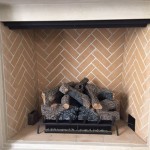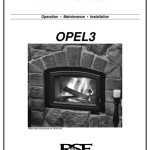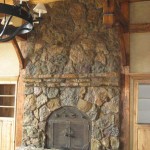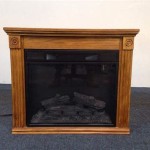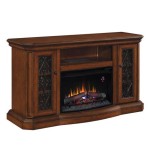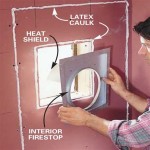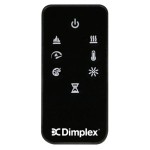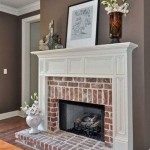Understanding Infrared Electric Fireplaces: A Comprehensive Guide
Infrared electric fireplaces offer a modern, efficient, and aesthetically pleasing alternative to traditional heating methods. They utilize infrared radiation to directly warm objects and individuals within a room, rather than heating the surrounding air. This distinction provides several advantages in terms of energy efficiency, comfort, and safety. This article will explore the functionality, benefits, considerations, and maintenance aspects of infrared electric fireplaces, providing a detailed understanding of their operation and suitability for various applications.
An infrared electric fireplace comprises several key components working in unison to generate heat. The primary component is the heating element, typically a quartz or ceramic element, which becomes incandescent when electricity passes through it. This heated element emits infrared radiation. A reflector positioned behind the element directs the infrared rays outwards into the room. A fan, in many models, assists in circulating the warmed air, further enhancing heat distribution. Finally, a decorative housing, often mimicking the appearance of a traditional fireplace, encases these components, providing aesthetic appeal and safety features.
How Infrared Heating Works
The fundamental principle behind infrared heating lies in the electromagnetic spectrum. Infrared radiation, a type of electromagnetic wave, falls between visible light and microwaves. Unlike traditional convection heating, which warms the air, infrared radiation directly heats objects and individuals it encounters. This process is similar to how the sun warms the earth. When infrared waves strike a surface, they are absorbed, causing the molecules within that surface to vibrate. This vibration generates heat, increasing the temperature of the object. Consequently, individuals within the room feel warm even if the surrounding air temperature remains relatively low.
The efficiency of infrared heating stems from this direct heating mechanism. Traditional convection heating requires warming the entire volume of air in a room before individuals feel the effects. This process can be slow and energy-intensive, particularly in rooms with high ceilings or poor insulation. Infrared heating, on the other hand, bypasses this step, delivering warmth directly to the occupants and objects within the room. This targeted heating reduces energy waste and provides a more immediate sense of comfort.
Furthermore, infrared heating does not dry out the air as significantly as convection heating. Convection heating can reduce humidity levels, leading to dry skin, irritated sinuses, and other discomforts. Infrared heating, by not directly warming the air, maintains a more consistent humidity level, contributing to a more comfortable indoor environment.
Advantages of Infrared Electric Fireplaces
Infrared electric fireplaces offer a multitude of advantages over traditional fireplaces and other heating solutions. These advantages encompass energy efficiency, safety, aesthetic appeal, and ease of use.
One of the primary benefits is energy efficiency. As previously mentioned, infrared heating directly warms objects and individuals, minimizing energy waste. Many infrared electric fireplaces also come equipped with adjustable thermostats and timers, allowing users to precisely control the heating output and duration, further optimizing energy consumption. Studies have shown that infrared heaters can be more energy-efficient than traditional space heaters, especially in situations where localized heating is sufficient.
Safety is another significant advantage. Electric fireplaces eliminate the risks associated with traditional fireplaces, such as open flames, sparks, and carbon monoxide emissions. The heating elements are typically enclosed and protected, reducing the risk of burns. Many models also incorporate safety features such as overheat protection, which automatically shuts off the fireplace if it reaches an unsafe temperature. This makes infrared electric fireplaces a particularly appealing option for households with children or pets.
From an aesthetic perspective, infrared electric fireplaces offer a variety of design options to complement any décor. They are available in a range of styles, from traditional fireplace mantels to modern wall-mounted units. The flame effects, often created using LED technology, can be adjusted to create a realistic and inviting ambiance. The visual appeal of these fireplaces can enhance the overall atmosphere of a room, providing both warmth and visual comfort.
Ease of use is another key benefit. Infrared electric fireplaces are typically easy to install and operate. Most models simply plug into a standard electrical outlet and require no special venting or gas lines. The controls are usually straightforward and intuitive, allowing users to easily adjust the temperature, flame effects, and timer settings. The low maintenance requirements further contribute to their ease of use. There is no need to clean chimneys, manage firewood, or worry about ashes.
Factors to Consider When Choosing an Infrared Electric Fireplace
Selecting the right infrared electric fireplace requires careful consideration of several factors, including room size, heating capacity, features, and budget. Evaluating these factors will ensure that the chosen fireplace meets the specific needs and preferences of the user.
Room size is a crucial consideration. The heating capacity of an infrared electric fireplace is typically measured in BTUs (British Thermal Units). A higher BTU rating indicates a greater heating capacity. It is important to choose a fireplace with a BTU rating appropriate for the size of the room it will be heating. A fireplace with an insufficient BTU rating may struggle to adequately heat a large room, while a fireplace with an excessive BTU rating may consume more energy than necessary. Online BTU calculators and manufacturer guidelines can assist in determining the appropriate BTU rating for a given room size.
Features also play a significant role in the selection process. Many infrared electric fireplaces offer a range of features, such as adjustable thermostats, timers, remote controls, and adjustable flame effects. These features can enhance the user experience and provide greater control over the heating output and ambiance. It is important to consider which features are most important and choose a fireplace that offers those features.
The design and style of the fireplace are also important considerations. Infrared electric fireplaces are available in a variety of styles and finishes, from traditional to modern. It is important to choose a fireplace that complements the existing décor of the room. Consider the size and shape of the fireplace, as well as the materials and finishes used in its construction. It's crucial to assess the fireplace's dimensions relative to the intended location to ensure it fits appropriately.
Budget is always a key consideration. Infrared electric fireplaces range in price from relatively inexpensive to quite expensive. It is important to set a budget before starting the shopping process and to compare prices and features across different models. Keep in mind that the initial purchase price is not the only cost to consider. Also important are the ongoing energy costs associated with operating the fireplace.
Placement is also a practical consideration. While typically portable, the proximity to electrical outlets and the avoidance of obstructions are important. Consider the location in the room that will deliver the most effective heating for the space. Some models are designed for corner placement, while others are wall-mounted.
Finally, consider the noise level of the fireplace. Some models, particularly those with fans, can generate a noticeable amount of noise. If noise is a concern, look for models that are specifically designed to be quiet or that offer adjustable fan speeds.
Warranty and customer support are valuable indicators of product quality. Scrutinize the warranty terms and the availability of customer support from the manufacturer. A longer warranty and responsive customer support suggest the manufacturer stands behind its product and is committed to resolving any issues that may arise.
By carefully considering these factors, individuals can select an infrared electric fireplace that meets their specific needs and provides years of reliable heating and aesthetic enjoyment.
When assessing safety certifications, such as UL or CSA listings, these independently verified safety standards indicate that the appliance has undergone testing to meet specific safety requirements. This helps ensures safe operation and mitigates potential hazards.
Maintenance of infrared electric fireplaces is generally straightforward and requires minimal effort. The primary maintenance task involves cleaning the heating element and reflector to ensure optimal performance. This can usually be done with a soft cloth or vacuum cleaner. It is important to unplug the fireplace before cleaning and to follow the manufacturer's instructions carefully.
The flame effects, which are typically created using LED lights, may occasionally require replacement. LED lights are generally long-lasting, but they can eventually burn out. Replacing the LED lights is usually a simple process that can be done at home. Refer to the manufacturer's instructions for specific guidance.
Regularly inspect the power cord and plug for any signs of damage. If the cord or plug is damaged, it should be replaced by a qualified technician to prevent electrical hazards.
Avoid using abrasive cleaners or solvents when cleaning the fireplace, as these can damage the finish or components. Instead, use a mild soap and water solution and a soft cloth.

Allen Roth 50 5 In W White Infrared Quartz Electric Fireplace The Fireplaces Department At Com

Allen Roth 47 5 In W White Infrared Quartz Electric Fireplace The Fireplaces Department At Com

Real Flame Merced Grand 61 25 In Infrared Electric Fireplace White 8240e W Réno Dépôt

Winado 14 In Freestanding Small Infrared Electric Fireplace With Overheat Protection Black 519786368780 The Home Depot

Twfp1510 Dark Oak Infrared Fireplace Heater Refurb Blemi

26 3d Upgrade Infrared Spectrafire Contemporary Electric Fireplace Insert

Country Living 24 W X 23 5 H 13 D Freestanding Electric Fireplace Stove Heater Deep Red Com

Real Flame Merced Grand 61 25 In Infrared Electric Fireplace Black 8240e Bk Réno Dépôt

Colton 55 Infrared Media Electric Fireplace Aged Oak Finish

Infrared Electric Fireplace White 1500 W 1164fm 23 201 Rona
Related Posts

